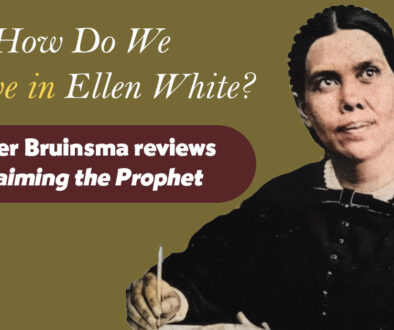Adventist World Statistics Evaluated by a Retired Missiologist
by Monte Sahlin
At the recent annual meeting of the General Conference executive committee G. T. Ng, executive secretary of the Adventist world church, told church leaders that the Seventh-day Adventist Church is approaching 18 million members. The report was published by the Adventist Review. I will quote a few lines from the extensive report and the make some observations about each quote.
We … “enjoy dramatic growth in Southern Asia, Latin America and Southern Africa, which has pushed worldwide membership to nearly 18 million … with the Adventist population booming in much of the southern hemisphere.”
In our global statistics and the spread of Adventism we have to take into consideration the immense areas where the main religion is Islam, Hinduism or Buddhism as well as countries where communism is unchallenged. About two billion people live in these places and are, for religious or political reasons, outside the reach of any Christian missions. The 18 million Adventist are largely located in other nations in Africa, Asia and South America.
Urban areas are the main focus of Adventist world evangelism these days. For our purposes an urban area is a city with at least 50,000 people. With this definition, more than half of the world’s populations live in urban areas. It has been estimated that in urban areas there are 555 individuals for each Adventist. For comparison purposes, these figures can serve as indicators of the Adventist presence on the globe: The 18 million Adventists in a world with about 7 billion people makes a benchmark of one Adventist for 396 individuals. In the Christian world with 2.3 billion Christians, belonging to 44,000 denominations, the statistics result in the indicator of one Adventist for 128 Christians. In the USA and Canada with a combined population of 346,670,000 and 1,135,000 Adventists there is one Adventist for 306 individuals.
“Some 6.6 million members live in Africa, 5.8 million are in Latin America, and 3.4 million are in Asia. …The report heavily emphasized statistics based on trends that emerged several years ago: Nations in the northern hemisphere are experiencing slow growth.”
These statistics reveal that in Africa with 950 million people and 6.6 million Adventist, there is one Adventist for each 144 individuals. In Latin America with 598 million inhabitants and 5.8 million Adventists it is one to 103. With the present distribution of membership and areas of the most rapid church growth some may claim that the Adventist faith is becoming a religion for the developing world with its strength moving from northern to southern continents. The GC report could suggest that this is the case.
The concepts in Revelation (1:12; 2:5), where the lamp stand is interpreted as representing Christendom, could serve as a fitting model. Christianity began in Palestine 2000 years ago. Then it moved north of the Mediterranean. With the Reformation, Northern Europe became the most important Christian continent. Then North America came on the world scene. However, it seems for the present that South America is taking over as the center of initiatives and missionary energy. It is predicted that in 50 years Africa will be the strongest Christian continent. And figures suggest that Asia may emerge as a future Continent with an impressive Christian population.
The Advent movement as revealed by the 2013 GC reports has to a great extent confirmed and followed a similar pattern. Of the 13 world divisions five are not able to report significant progress, while the five divisions where things are happing have the word Southern in their names. Of the 18 million members today, only 2 million reside in northern divisions. It is a decided change from 1900 when North America, Europe and Australia were the sole places where Adventist could be found.
“The 15 fastest declining unions are in the Euro-Asia, Trans-European and Inter-European divisions – not surprising given the population loss in the Eastern European nations, setback by a major economic crisis and high unemployment in and around the former Soviet Union.”
Secularism is no doubt the main reason for the decreasing memberships in Western Europe. The losses could in some places, as time passes, become be a question of survival. The growth experiences of churches in many Eastern European countries after the decline of communism in 1989, have to some extend been exhausted. At the same time the rather relaxed European Union immigration laws have made it possible for Eastern European immigrants to seek employment and move westward. One result is that Eastern European Adventists, together with sisters and brothers from Africa, Asia and South America, have made it possible for union conferences in Great Britain, France, Germany, Spain and Portugal to keep their statistics in a stable state and even report limited growth. Romania with 24 million people and 67,000 Adventists has the European record with one Adventist to 358 individuals. It is also through migration responsible for the growth in Spain.
On the other hand Adventist churches in Scandinavia were not to the same degree a goal for Adventist immigrants and have lost out in the area of transfer growth. For instance consider the unfortunate developments in Denmark. In 1973 Denmark had a population of 5 million with 4,000 Adventists. In 2013 with a population of 5.5 million the membership has fallen to 2,500 or a 38 per cent loss. Add to this the fact that about half of the church members in Denmark are past 60 years of age. Today Denmark with a population of 5.5 million and 2,500 Adventist reports 2,200 persons for each Adventist. The state of affairs, in some of the other Scandinavian countries are perhaps a little more positive, but the general trend in all European Adventist churches is somewhat similar to the facts about Denmark.
“On the other end of the growth spectrum was the South Pacific Division, which reported a membership decline of about 5 percent. Division President Barry Oliver said the loss was expected because a comprehensive audit removed many members from church records. 'The growth rate suffered simply because we caught up on all the statistics to make them more accurate.'”
A few years ago while conducting in-service education on church growth for a group of experienced ministers, the students asked me each time I was dealing with statistics on Adventist memberships, whether my numbers were names on the list or active members. The report from the South Pacific Division and the words from the president, Pastor Barry D. Oliver, must have been a thought-provoking and perhaps not by all a welcome testimony. How do we count? How do we use numbers? How many of the 18 million are really Adventists in lifestyle and confessions?
At a meeting of church administrators where these issues were on the agenda, it was, in good humor, suggested by an executive that if you desire to have a long life, just move to a certain named field. "They have not reported any deaths over the last six years." Some years ago in my early missionary experience my pastors told me, a young and new president, that quite a few names on their membership lists could not be found. Some members were know to them to have passed away years ago, but were still counted.
In a conversation with my union president, I suggested that my field conduct a thorough audit of all church lists and get them up to date. It might result in a 20 percent decrease in membership statistics. The wise leader told me that this would be ideal and he would not stop me from doing it, however, it would possibly also mean that the appropriations from higher church units would be cut by 20 percent. For financial reasons we tried to be practical, and only dropped the names of the unknown and dead church members in step with new baptisms.
“While North America is considered slow growing, it still provides the single-largest amount of tithe, at $933 million. The next-closest tithe-producing division is South America, with more than $500 million.”
Another interesting fact about faithfulness is in tithing. The report has it that last year $933,000,000 was paid in tithe by 1,135,000 North American church members. The average per capita income in the USA and Canada is estimated to be $45,000. Ideally the tithe would on average be $4,500 per year from each member. However, the report states that the average per capita tithe was only $822. Even taking into consideration that a number of church members are seniors, students, unemployed and so on, the figure is fairly low.
When we as a global Christian denomination publish encouraging reports on progress in various areas, would it be proper to also make room for the negative effect passive members have on the statistics? Perhaps it could be suggested that the example of the comprehensive audit undertaken by the South Pacific Division administration should be a model for the world church. This would no doubt result in a somewhat smaller global membership. However, a more honest report would have a positive influence on plans for evangelism, pastoral care, distributions of funds, approaches to administrations, the role of institutions and the deployment of missionaries.
Reporting based on actual facts should also report the increased numbers of “cultural Adventists” and members who have lost interest. By "cultural Adventists," I mean those secular or nonreligious individuals who still identify with Adventist culture due to family background, personal experience, or the social environment in which they grew up.
Numbers and statistics are important for the church. But in dealing with numbers, especially in evangelism, we must have in mind that big numbers are not necessarily a sign of special blessings. We must be aware of that in missiology circles, the term ‘number game,’ is used when a church’s progress and blessings are reported but the problems are not. Statistical progress should never be a goal in itself or used as a sign of special blessings.
There is nothing wrong in counting. Statistics are needed for good administration. However, the counting should also include the spiritual side of a Christian movement, the relationship of members to Christ and the church, as it is manifested in, among other things, church attendance and financial support of the cause. Reports on numbers should never be used as proof of special blessings of the Holy Spirit. They can be an indication of good evangelists and well planned approaches. However, in all cases humility should be shown.



